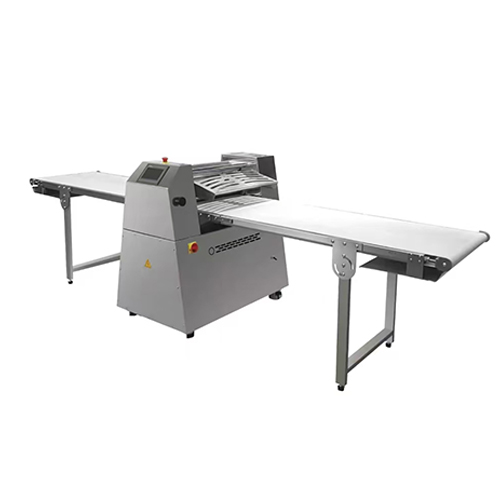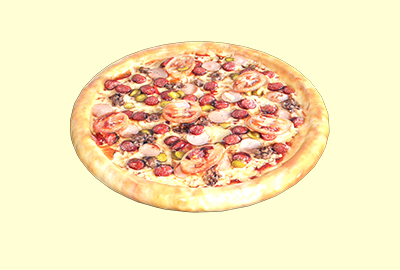


Discover the latest pizza dough press innovations for 2025 to boost efficiency, consistency, and flexibility in your pizza production process.

Have you ever wondered what makes the perfect pizza crust? Is it the recipe, the dough itself, or the technology that shapes it? If you are in the food production industry or manage a commercial kitchen, you know the importance of consistency, speed and quality in pizza dough production. And that’s where the pizza dough press can make a big difference as a disruptive solution.
As the year 2025 approaches, remarkable innovations in pizza dough press technology are reshaping the landscape of the baking industry. From deeper automation to integrated smart features, these latest technological advancements promise to significantly increase productivity, effectively reduce labor requirements, and ensure perfectly round dough is pressed every time.
In this blog, we’ll explore future trends, technological updates, and things you should consider before investing in your next pizza dough press. Whether you’re upgrading your equipment or going brand new, these insights will help you stay ahead of the curve in a competitive market.
The pizza dough press isn’t just a tool—it’s the backbone of a streamlined pizza-making process in high-volume kitchens and industrial production lines. With evolving consumer demands for artisanal, thin-crust, and gluten-free options, flexibility in dough shaping has become a top priority.
The question is no longer whether to adopt advanced dough pressing technology—but which innovations to watch in the coming year.
Digital technology is taking center stage in 2025. Advanced pizza dough presses are expected to feature programmable settings, touchscreen interfaces, and AI-assisted thickness adjustments. These systems will automatically detect dough ball size, weight, and moisture levels to optimize pressing parameters in real time.
Such features will minimize human error and guarantee uniformity across production batches, making them ideal for both small bakeries and large-scale food processing lines.
Heating plates are critical to a pizza dough press’s functionality, especially when a partially baked crust is required. The next generation of presses focuses on energy efficiency, ensuring rapid heating and minimal power consumption while maintaining even temperature distribution.
Better heating plate technology reduces baking inconsistencies, prevents sticking, and maintains dough elasticity—essential for creating high-quality pizza bases ready for toppings or freezing.
As labor shortages impact industries globally, automation in pizza dough pressing becomes a necessity rather than a luxury. Innovations include automatic dough ball feeding, auto-alignment, and multi-press capabilities—all designed to maximize output with minimal human supervision.
These advancements enable continuous operation in industrial production, reducing downtime and operational costs while boosting efficiency.
Consumer trends are demanding more than standard round pizza bases. The future pizza dough press models will likely offer interchangeable molds and adjustable sizing capabilities to create a variety of dough shapes and thicknesses—including square, oval, and specialty crusts.
This flexibility not only meets customer preferences but also opens up opportunities for diversified product lines such as flatbreads, calzones, and stuffed crust pizzas.
Expect the materials used in pizza dough presses to improve as well. New non-stick surfaces, corrosion-resistant metals, and food-grade coatings will enhance hygiene, reduce cleaning time, and prolong equipment lifespan.
The table below summarizes key expected improvements and features in 2025 pizza dough press technology:
| Feature | Current Standard | 2025 Innovation Outlook | Benefit to Users |
|---|---|---|---|
| Control Systems | Manual or semi-automatic | Fully programmable with AI sensors | Higher consistency, less manual input |
| Heating Plate Technology | Standard heating | Energy-efficient with precise temp control | Better dough texture, lower energy costs |
| Automation Level | Partial automation | Fully automated with multi-dough capability | Increased output, reduced labor dependency |
| Design Flexibility | Fixed mold and size | Adjustable molds, multiple shapes possible | Product diversity, market expansion |
| Material & Hygiene Standards | Stainless steel, basic non-stick layer | Advanced non-stick, anti-bacterial coatings | Easier cleaning, improved food safety |
Before adopting a new pizza dough press, several factors need careful consideration to ensure the investment matches your production goals:
Making the right choice ensures your pizza-making process stays competitive, efficient, and profitable in the coming years.
The year 2025 will undoubtedly be an exciting one for everyone in the pizza production industry. With smarter control systems, greater energy efficiency, and unparalleled automation capabilities, the next generation of pizza dough presses will completely reshape the way bakeries and food manufacturers produce.
If you’re thinking about upgrading your current equipment or building an entirely new production line, now is the perfect time to explore these upcoming innovations and set your business up for success.
What is a pizza dough press and how does it work?
A pizza dough press is a machine designed to flatten dough balls into uniformly shaped pizza bases. Depending on the model, it can operate manually, semi-automatically, or fully automatically, using heat and pressure to achieve the desired thickness and diameter.
Can a pizza dough press handle gluten-free or specialty doughs?
Yes, but it’s essential to choose a press designed for flexibility. Some presses come with adjustable settings that accommodate gluten-free, whole wheat, and other specialty dough types without sticking or tearing.
Is heating necessary in a pizza dough press?
Not always. Some pizza dough presses use heated plates to partially bake or set the dough shape, while others operate cold. Heated plates are useful for creating par-baked crusts or preventing dough shrinkage.
How do I maintain a pizza dough press for longevity?
Regular cleaning, proper lubrication of moving parts, and timely replacement of worn-out components will extend your pizza dough press’s lifespan. Always follow the manufacturer’s maintenance guide.

